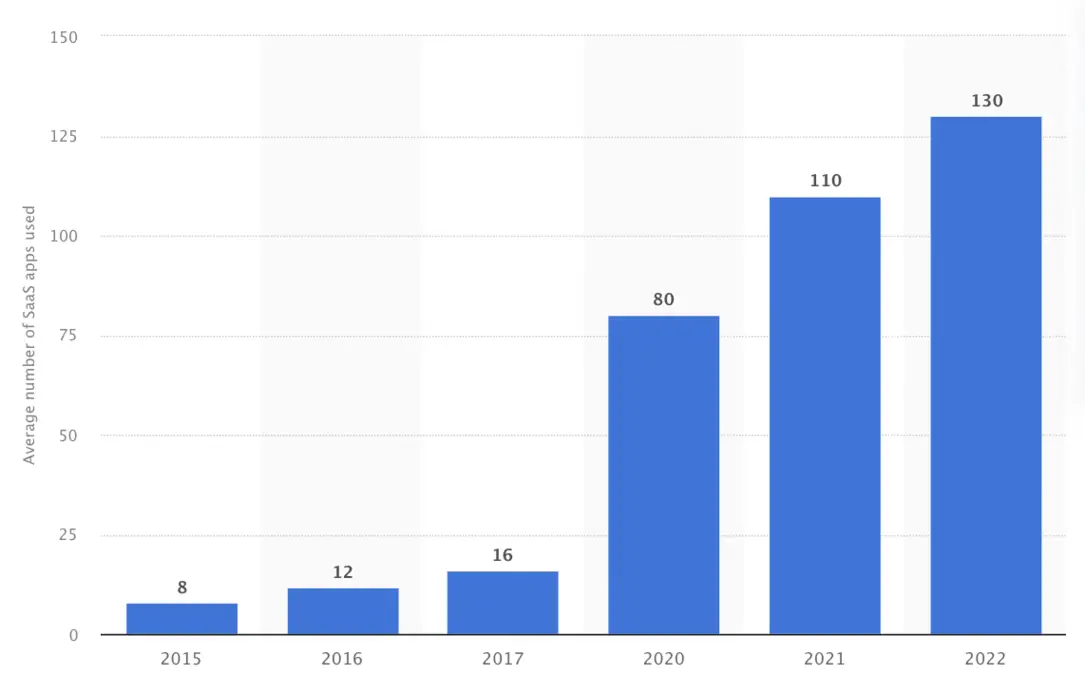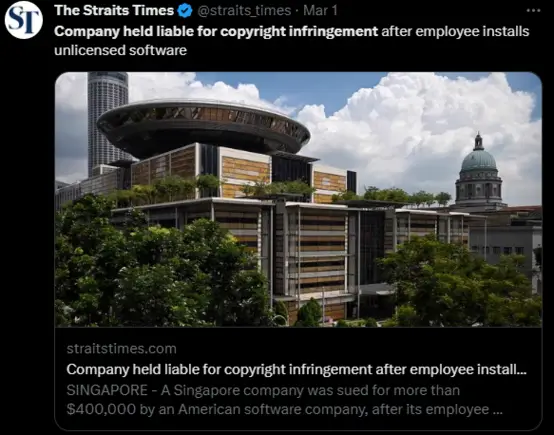
Modern businesses heavily rely on software, making license compliance vital. Beyond every user interface is a network of contracts and licenses governing software usage. The shifting landscape has amplified compliance challenges, especially for businesses juggling multiple software subscriptions.
In this article, we’ll delve into software license compliance, spotlight CISO’s pivotal role, and provide a succinct guide for businesses to remain audit-ready and compliant.
What is license compliance?
License compliance guarantees that software program usage and distribution adhere to the terms of licensing agreements. It’s about using software that’s authorized and follows the vendor’s conditions. For growing enterprises, these intricacies can be daunting.
Many, therefore, seek assistance from third-party support providers like Spinnaker Support. We provide specialized services for Oracle regulation compliance, including a detailed license check and formal audit defense. Additionally, our Readiness Review streamlines the transition to third-party support.
Understanding license compliance
License compliance can seem overwhelming, especially for those new to the realm of software management.

To simplify things, let’s break it down into digestible parts.
Types of licenses
There are two main types of software licenses: open source and proprietary.
Open-source licenses: These are permission-based and primarily driven by the community. Some of the common types under this category include:
- Public domain license: This permissive license allows users to adopt and modify the software without restrictions.
- GNU/Lesser General Public License (LGPL): Under LGPL, developers can link open-source libraries to their software. The resulting code can have any license, but changes to the source code must follow its original terms.
- Permissive: Commonly called “Apache” or “BSD style,” these licenses have minimal restrictions but may mandate preserving license notices or copyrights.
- Copyleft: Software modifications using copyleft-licensed source code must maintain the original license when distributed.
Proprietary software licenses: These licenses restrict all use, modification, or distribution of the software, and any breach can lead to significant penalties and legal actions.
Common licensing terms
Understanding these licenses requires further deciphering of different licensing models found in software licensing agreements.
- Per-user license: Each license is tied to individual users.
- Site-wide license: This license allows unlimited usage within a physical location, irrespective of individual users.
- Perpetual licenses: These require a one-time payment and provide indefinite use of the software but often don’t include upgrades.
Grasping the basics of software licensing is the first step to achieve comprehensive compliance. By familiarizing yourself with the types, terms, and nuances in between, you’re well on your way to a more secure software environment.
Why is software license compliance important?
Software powers most of the critical processes in organizations. Hence, software license compliance isn’t just a legal requisite but a strategic necessity.
Here’s why.
It provides legal protection
One of the primary reasons is to shield organizations from potential legal repercussions. Non-compliance can lead to hefty penalties, damaging lawsuits, and even criminal charges in some jurisdictions.
It builds trust
Adhering to software license terms builds trust with vendors, customers, and partners. And it reinforces an organization’s commitment to ethics, which boosts its brand image.
It helps optimize investments
By understanding software usage patterns and aligning them with licensing terms, organizations can avoid over-spending or under-utilizing resources. This optimization directly impacts costs, making sure businesses get the maximum value from their software investments.
It aids security
Data shows that 56% of software attacks arise from insider negligence and another 26% from malicious insiders. Shockingly, 67% of organizations face at least 21 incidents yearly.
Given this backdrop, strict adherence to corporate policies and industry standards is crucial. Through regular audits, businesses can bolster their defenses, mitigating the risk of breaches and cyber threats.
The challenges CISO’s often face with license compliance
Compliance in software licensing presents unique challenges for Chief Information Security Officers (CISOs), from managing software inventories to deciphering contract terms. Let’s delve into these challenges.
Keeping track of numerous software assets across various departments
The digital transformation of enterprises has resulted in numerous software tools dispersed across various departments. Companies in 2022 use an average of 130 software applications, up from 8 applications in 2015.

Centralizing the data these applications generate is challenging. Using Software Asset Management (SAM) tools helps centralize and track software installations, streamlining compliance management.
Understanding the complex terms of software licensing agreements
Software licensing agreements can be complex, posing potential compliance challenges. CISOs should train their teams to understand these terms and stay updated on changes to prevent unintentional breaches, reducing non-compliance risks.
Guaranteeing all software usage is under proper licensing
Making sure every software application in an organization is authorized and compliant with licensing is challenging. CISOs should conduct regular checks, aided by automated systems, for legitimacy. Periodic audits are vital to identify unauthorized software or “shadow IT,” preventing potential legal and security exposures.
Risk of over-licensing, leading to unnecessary costs
It’s crucial to avoid over-licensing, a common oversight leading to extra costs. CISOs can employ strategies to gauge real software needs, preventing needless expenses. This approach not only maximizes software investments but also ensures compliance with licensing agreements.
Step-by-step guide to ensuring license compliance
Navigating the rules and requirements of software licenses can be challenging. However, thorough preparation and a methodical approach can make this task more manageable and less risky.
1. Assess and review software assets
The foundation of compliance is a thorough understanding of all software used within your organization. This not only informs CISOs of what needs managing but also highlights potential software vulnerabilities.
- Document all software assets: Create a central repository listing all your software products, versions, and where they are installed.
- Review software usage metrics: Using SAM tools, helps you analyze who is using different software in your organization, and how often, which can be instrumental in future planning for compliance with software licenses.

- Identify unused or redundant licenses: Your software review might reveal products that are no longer in use or duplicate licenses, which you should then remove to save costs.
2. Understand license agreements
It’s vital to comprehend your license agreements, as they detail your rights and duties. Given their complexity, making sure your teams understand these terms is key. This prevents unintended compliance breaches and maximizes your software investments.
- Train teams to comprehend licensing terms: Appoint a trained team or expert to interpret licensing terms, aligning them with the organization’s usage. Additionally, conduct training sessions to inform staff about essential licensing conditions.
- Regularly review software agreements: Stay ahead of the curve by periodically revisiting software license agreements, especially when they’re up for renewal or when the software updates.
3. Implement management tools
Managing licenses manually is hardly practical.
Fortunately, technology can be a robust ally in your mission to stay compliant. By leveraging the right tools, you can automate much of the oversight required to manage software licenses and ease the burden on your compliance efforts.
- Leverage software license management tools: Use dedicated license management software to check license usage for all software and applications across your organization. Using tools that provide real-time data helps you to stay within the agreed-upon limits at all times.
- Set up alert systems: Enable proactive management of your license compliance efforts by leveraging the built-in alert mechanisms that dedicated SAM tools provide. They’ll track licensed software and flag any licenses that are nearing their limit. Or those in need of renewal, so you never fall out of compliance.
4. Perform regular audits
Regularly auditing your software isn’t just about compliance. Not only can they help catch potential compliance issues before they escalate and help make sure your organization is always compliant — they also reveal opportunities for efficiency gains and help cut costs.
- Perform monthly internal audits: Performing regular internal checks allows you to catch and correct small issues before they become significant problems. More importantly, they help you maintain a state of preparedness for external audits. Your records of these internal audits can also be beneficial when preparing an audit defense.

Always be prepared for external audits: There’s no way to know what may trigger an external audit from companies like SAP, Oracle, and other major software vendors. Some perform them annually, and some perform them bi-annually. Making sure that you are always in compliance and fully prepared reduces the stress that goes with an external audit.
By following this step-by-step guide, organizations can mitigate the potential risks of non-compliance, optimize software expenditures, and improve operational efficiencies. Remember, software license compliance isn’t just a legal necessity but also a reflection of an organization’s operational integrity.
Consequences of not complying with software licenses
When software license compliance falls to the wayside, the repercussions can be severe, both legally and financially, and could tarnish an organization’s reputation.
Below, we delve into what could happen if your organization becomes non-compliant.
Legal actions
Vendors have a slew of legal options at their disposal to take action against non-compliant organizations. For instance, they can issue cease and desist orders, claim damages, and, in extreme cases, press criminal charges.
Financial repercussions
The immediate financial implications can be quite hefty. In addition to paying back the costs of unlicensed software, organizations can be subjected to substantial fines and penalties. These fines are often calculated based on the number of software units illegally installed multiplied by the original cost of licensed software, resulting in considerable financial outlays.
Impact on Business Reputation
Word about non-compliance can quickly tarnish an organization’s standing in the market. Vendors may share this information with other industry players, leading to a ripple effect that results in mistrust from potential clients or partners. This can have long-term adverse effects, driving down not only revenue but also affecting business partnerships and expansion opportunities.
Case study: Inzign and Siemens
Take the case of Inzign, a Singapore-based company that faced legal repercussions for failing to adhere to software license compliance. An employee installed unauthorized software on a company laptop and the company was later found vicariously liable for copyright infringement.

This means that while the company itself isn’t technically guilty of the infringement, they’re still being held responsible for what their employee did. The High Court ordered Inzign to pay $30,574 in damages to Siemens Industry Software.
This case is a cautionary tale, highlighting the importance of software compliance and the potential consequences of lax software asset management. This scenario underscores the importance of proactive compliance measures.
Ignorance isn’t an excuse that holds up well in court. Therefore, a strong compliance framework isn’t just an optional layer of security — it’s an imperative safeguard for the fiscal and reputational well-being of your business.
Stay prepared for a software license audit
Navigating the complexities of a software license audit can be a daunting task. However, preparation and organization can streamline the process and mitigate risks. Below are some strategies for efficiently handling software license audits.
Maintain a centralized repository of software agreements
Begin with a centralized repository for all software license agreements and associated documents, including purchase orders, invoices, and authenticity certificates. Make sure key software management personnel have access to it. This foundational step avoids last-minute scrambles during audits and guarantees full awareness of all terms and conditions.
- Tip: Use software tools specifically designed for Software Asset Management to keep track of licenses and documentation.
Maintain clear communication lines with vendors
Keeping clear and open communication with software vendors is essential. Often, vendors may offer guidance on navigating audits effectively. Set up a direct connection to their support or account management teams for assistance during the audit.
- Tip: Early engagement with vendors allows you to understand their perspective and possibly influence the software audit’s scope or timeline.
Engage a compliance expert or team
If your organization is large or has a complex software application landscape, consider bringing in a software compliance expert or even an entire team to oversee the audit. They can review the terms of your software licenses and help you prepare, ensuring you’re in the best possible position when auditors arrive.
A good example of this is when Lexmark leveraged Spinnaker Support’s expertise during a migration of an essential piece of Oracle software. We reduced Lexmark’s risk and optimized their costs through a tried-and-true process we’ve employed for years. One that begins with a meticulously crafted audit strategy, showcasing the value of having an external software compliance audit team.
By taking these steps, you set the stage for a more organized and less stressful audit experience. These preparations can safeguard your organization from the financial and reputational ramifications of failing a software license audit.
Conclusion
CISOs play an instrumental role in steering the ship of software license compliance in today’s business environment. Their leadership makes sure organizations navigate the nuances of software license agreements without faltering.
At Spinnaker Support, we’ve observed the transformative power of a proactive approach, where anticipation beats remediation every time. The rewards for such diligence are multifold — from cementing trust with software vendors to optimizing operational efficiencies.
Embracing software compliance not only safeguards your investments but also propels businesses forward, and Spinnaker Support stands ready to guide and support you on this pivotal journey.


